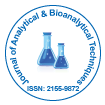Nosso grupo organiza mais de 3.000 Séries de conferências Eventos todos os anos nos EUA, Europa e outros países. Ásia com o apoio de mais 1.000 Sociedades e publica mais de 700 Acesso aberto Periódicos que contém mais de 50.000 personalidades eminentes, cientistas de renome como membros do conselho editorial.
Periódicos de acesso aberto ganhando mais leitores e citações
700 periódicos e 15 milhões de leitores Cada periódico está obtendo mais de 25.000 leitores
Indexado em
- Índice de Fonte CAS (CASSI)
- Índice Copérnico
- Google Scholar
- Sherpa Romeu
- Banco de dados de revistas acadêmicas
- Abra o portão J
- Genâmica JournalSeek
- JornalTOCs
- PesquisaBíblia
- Infraestrutura Nacional de Conhecimento da China (CNKI)
- Diretório de Periódicos de Ulrich
- Biblioteca de Periódicos Eletrônicos
- RefSeek
- Diretório de indexação de periódicos de pesquisa (DRJI)
- Universidade Hamdard
- EBSCO AZ
- OCLC – WorldCat
- Acadêmico
- Catálogo online SWB
- Biblioteca Virtual de Biologia (vifabio)
- Publons
- Euro Pub
- ICMJE
Links Úteis
Diários de acesso aberto
Compartilhe esta página
Abstrato
Adjustment of Matrix-Assisted Laser Desorption/Ionization for Glycolipids
Yusuke Suzuki, Akira Okamoto, Anila Mathew and Yasunori Kushi
Gangliosides isolated from biological sources are usually detected as sodium/potassium adduct ions and these ions are easily fragmented by dissociation of labile glycosidic bonds in the positive ion mode Mass Spectrometry (MS). A large number of conditions for fragment suppression of these acidic glycolipids by using non-acidic matrices or changing metal additions have been demonstrated. Compared to sodium/potassium adduct ions, the cesium adduct ions suppress the fragmentation of these acidic glycolipids. On the contrary, lithium adduct ions induce the fragmentation, but generate more informative fragment ions of glycolipids than other alkali metal adduct ions in post-source decay, MS/MS as well as MS spectra. To suppress the fragmentation of labile glycosidic bond and generate more informative fragmentation, we have examined and established the optimal condition for the detection of [M+Li]+ of gangliosides (GM3 and GM2) using the matrix-assisted laser desorption/ionization time-of-flight MS by adjusting matrix and alkali metal salt combinations and concentrations.
Diários por Assunto
- Agro e Aquicultura
- Alimentação e Nutrição
- Bioquímica
- Ciência da Computação
- Ciência de materiais
- Ciencias ambientais
- Ciências Clínicas
- Ciências Farmacêuticas
- Ciências gerais
- Ciências Médicas
- Ciências Sociais e Políticas
- Ciências veterinarias
- Economia e Contabilidade
- Enfermagem e cuidados de saúde
- Engenharia
- Engenheiro químico
- Física
- Genética e Biologia Molecular
- Geologia e Ciências da Terra
- Gestão de negócios
- Imunologia e Microbiologia
- Informática
- Matemática
- Química
Revistas clínicas e médicas
- Anestesiologia
- Assistência médica
- Biologia molecular
- Cardiologia
- Cirurgia
- Dermatologia
- Diabetes e Endocrinologia
- Doenças infecciosas
- Enfermagem
- Fisioterapia e Reabilitação
- Gastroenterologia
- Genética
- Hematologia
- Imunologia
- Medicamento
- Medicina Reprodutiva
- Microbiologia
- Nefrologia
- Neurologia
- Odontologia
- Oftalmologia
- Oncologia
- Ortopedia
- Pediatria
- Pesquisa Clinica
- Pneumologia
- Psiquiatria
- Toxicologia

 English
English  Spanish
Spanish  Chinese
Chinese  Russian
Russian  German
German  French
French  Japanese
Japanese  Hindi
Hindi